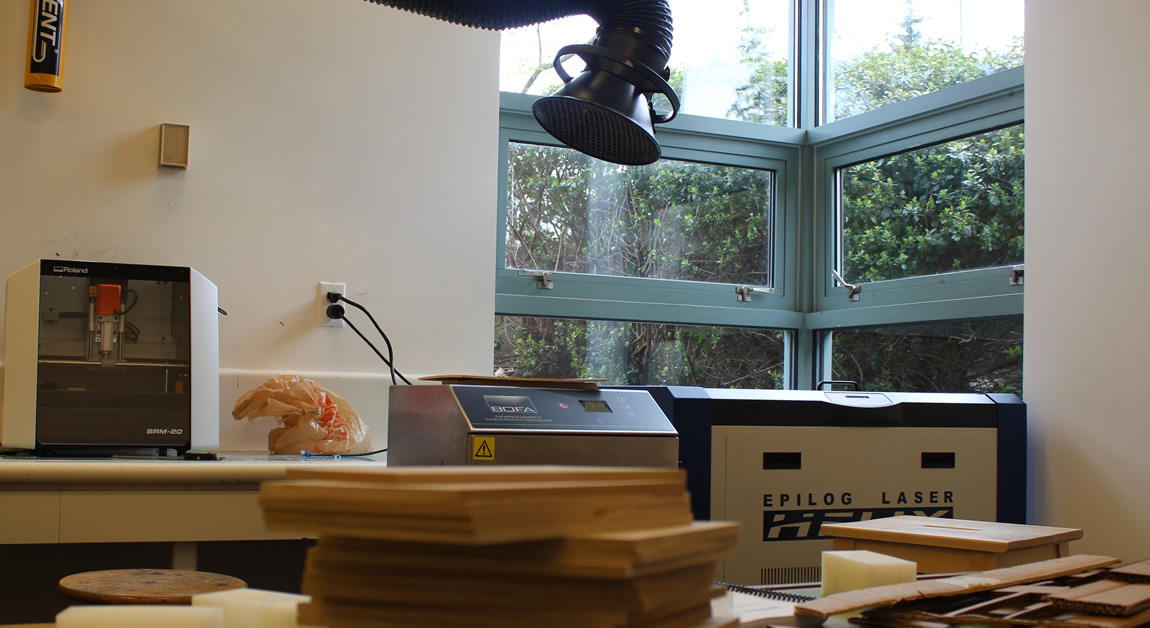The Departments of English and Visual Arts, as well as the Faculties of Fine Arts and Humanities, are pleased to announce the new Digital Fabrication Lab (DFL) at UVic. Stemming from a historic, first-of-its-kind partnership between English and Visual Arts, the DFL opened its doors in February 2015. Located in UVic’s Visual Arts building, it is modelled on “makerspace” approaches to computer-aided manufacturing and will ultimately feature an array of machinery, including a laser cutter, CNC miller, CNC router, structured-light 3D scanner, and 3D printer. The space emerged from conversations between Prof. Jentery Sayers (English) and Prof. Paul Walde (Visual Arts), who are both interested in the role new media plays in creative and cultural expression. As a research facility, the DFL will enable Sayers, Walde, and their collaborators to produce scholarship in fields such as media history, material culture studies, sculpture, and experimental art. It will also extend the design and prototyping research conducted in the Maker Lab. The DFL’s infrastructure is supported by the Canada Foundation for Innovation (CFI) and the British Columbia Knowledge Development Fund (BCKDF), with research support from the Social Sciences and Humanities Research Council (SSHRC).
With this announcement, we would also like to thank UVic Communications Officer, Tara Sharpe, who wrote “Makerspaces Matter” for The Ring. There, Sharpe not only details our Kits for Cultural History project. She also includes a few remarks by Walde, including the following, on the potential applications of digital fabrication for the arts at UVic:
There are far-reaching effects for this type of technology in just about everything we do. Photography was the first area where there was almost a complete paradigm shift towards digital, and we’re now seeing digital technology move into every aspect of visual arts production. This represents a way for us to move forward not only with new sculptural techniques and projects but also printmaking and even certain kinds of painting. . . . I’m very excited about it. I can’t wait to see what the possibilities are with this equipment. That’s usually what gets the imagination stirring.
We’re very much looking forward to collaborating with Walde, Visual Arts, and his team as the DFL moves forward. This opportunity is at once an honour and a pleasure. We’re also excited to integrate the DFL into our Kits for Cultural History research. During the next year or so, we’ll be using CNC methods to remake early wearables and audio technologies as well as experiment with book arts.
Post by Jentery Sayers, attached to the Makerspace project, with the news and fabrication tags. Featured image for this post care of Nina Belojevic.

